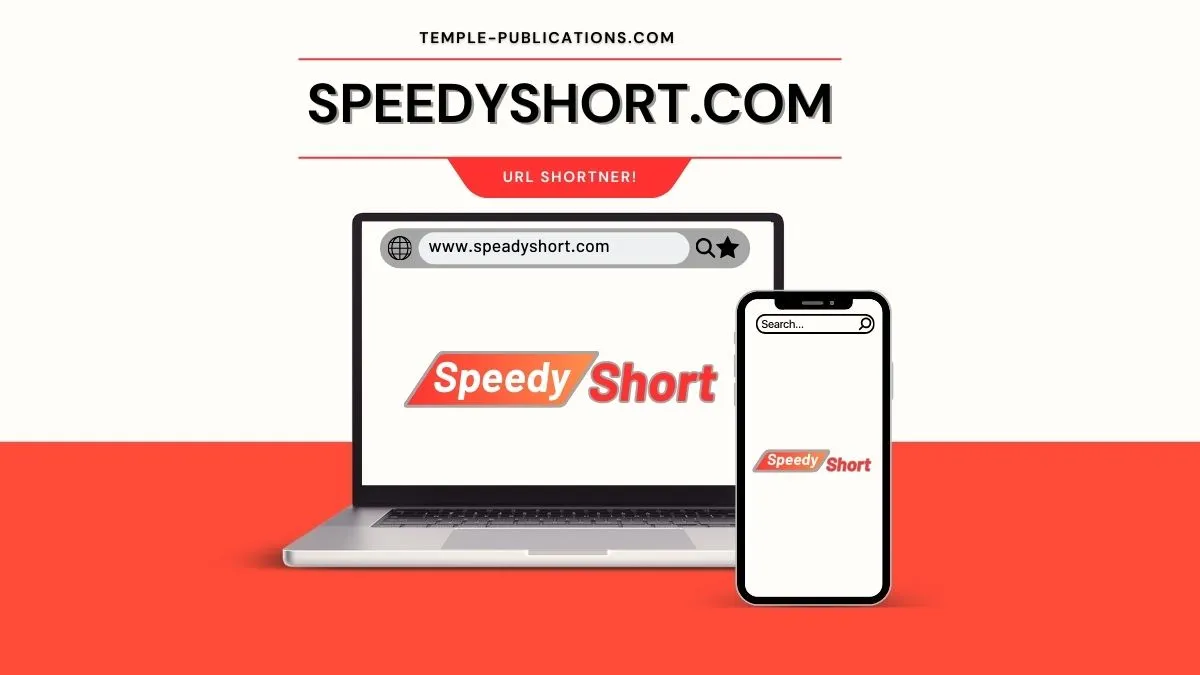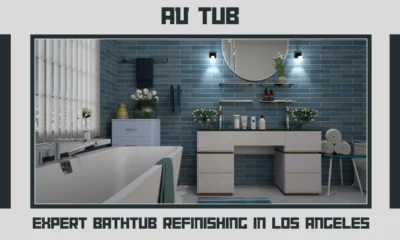GENERAL
SpeedyShort.com: Track, Analyze, and Optimize Your Links with Ease

SpeedyShort.com is a rather advanced URL-shortening service that can be helpful for anyone who needs to share a link and for companies that are planning national or international marketing campaigns. URL shorteners ease difficult-to-type and lengthy URLs so that they become easy to share and also to monitor. SpeedyShort.com not only provides its users with URL shortening service but also offers them more features such as analytics, safety, and compatibility with other platforms making it suitable to both users and the business world.
Features of SpeedyShort.com
Advanced Tracking and Analytics
One of the standout features of SpeedyShort.com is its comprehensive tracking and analytics capabilities. Users can access detailed metrics including:
- Click-through Rates (CTR): Track the click-through rates of your links.
- Geographic Data: Know the demographic of your audience.
- Demographic Data: Find out the age, gender, and interests of the target clientele.
With real-time data, the user can change their approaches frequently depending on how their campaigns are faring at a particular time.
Robust Security Features
Security is a major concern for any online service, and SpeedyShort.com addresses this with several robust measures:
- Data Encryption: Duplicates every message transmitted through the platform to guarantee that all information is secure.
- Link Protection: Prevents the system from being compromised and used for unlawful activities that include hacking.
- Anti-Phishing Measures: It helps to fight against phishing by checking whether the links that are in the web address are authentic or not.
Rapid Redirection
SpeedyShort.com is engineered for speed, providing rapid redirection that ensures a seamless user experience. This is crucial for maintaining user engagement and preventing frustration from slow-loading links.
Scalability
The platform is designed to handle large volumes of traffic without compromising performance. Whether you are running a small campaign or a high-traffic promotion, SpeedyShort.com scales effortlessly to meet your needs.
User Interface and Experience
Intuitive Design
SpeedyShort.com has a very simple design and offers easy navigation even if the client has little knowledge of computers. In terms of usability and interface design, the platform’s layout is intuitive, which means that it does not pose a challenge to users to find any of the options provided on the site. Cutting and working with shortened URLs is not a problem as the platform was designed with good UX and UI.
Custom Link Creation
Another important aspect of SpeedyShort.com is the customization of links. People can create links with the name of their brand or certain keywords, which increases brand awareness and increases the site’s ranking in search engines. Custom link creation helps to make the links easily memorable and at the same time provides a professional outlook to the shared data making it more appealing to the audience.
Analytics and Insights
In-Depth Performance Analysis
SpeedyShort.com provides in-depth performance analysis, allowing users to track various metrics and gain valuable insights into link performance. This includes:
- Click-through Rates (CTR): Evaluate the effectiveness of your links.
- Conversion Tracking: Measure how well your links drive desired actions.
Refining Marketing Strategies
The analytics tools available help users refine their marketing strategies by identifying trends, understanding audience behavior, and making data-driven decisions. This enables more effective campaign adjustments and optimizations.
Integration Capabilities
Integration with Google Analytics
SpeedyShort.com is also designed to work with Google Analytics so that users can link link-tracking data to more general web analytics. It also fills the gap where users can get an overview of how their shortened links are performing within the scope of their web campaigns and users’ activities.
Integration with Bitly
When comparing SpeedyShort.com with Bitly, both are powerful link shortener services while SpeedyShort.com. Looking at the various features that are offered by SpeedyShort.com, it is evident that it has superior analytics and superior customization capabilities. Although people are quite familiar with Bitly regarding its dependability, SpeedyShort.com offers a more distinctive appearance among the examples. However, it has some extra features that give users even deeper possibilities to track and analyze data, which is very helpful for people seeking more functions.
Integration with Social Network Management Systems
SpeedyShort.com’s integration with social network management systems enhances the efficiency of social media campaigns. Users can manage and track their links across various social media platforms from a centralized location, streamlining their efforts and improving their ability to monitor and analyze social media performance.
Benefits for Different Use Cases
Personal Use
For personal users, SpeedyShort.com simplifies the process of sharing long URLs by converting them into shorter, more manageable links. Custom link creation adds a personal touch, making shared links more memorable and engaging for friends and family.
Business Use
SpeedyShort.com is utilizing advanced analytics and tracking features to enhance marketing campaigns, enabling decision-making, strategy enhancement, and overall marketing optimization.
E-commerce
E-commerce businesses benefit from SpeedyShort.com’s ability to track product links and measure user engagement. The platform’s analytics tools enable e-commerce sites to optimize their promotional efforts, track the performance of product links, and drive sales more effectively.
Security and Privacy Concerns
SpeedyShort.com prioritizes security by employing advanced data protection measures. With robust encryption and link protection features, the platform ensures that user data remains secure and that links are safe from malicious activities. The platform also has mechanisms in place to identify and manage suspicious links, reducing the risk of potential threats. By proactively addressing security concerns, it helps maintain a safe and reliable environment for its users.
Best Practices for Using SpeedyShort.com
Creating Effective Custom Links
To make the most of users should focus on creating effective custom links. This includes using branded names and optimizing keywords to enhance visibility and engagement. Avoiding common mistakes, such as overly complex URLs, can also contribute to better link performance.
Analyzing Data Effectively
It’s essential to understand how to use data effectively for the optimization of the marketing plan. Users should make reasonable interpretations of analytics reports and rely on the knowledge derived from the analytics reports. It enables the users to manage the campaigns more effectively and gain superior returns depending on the information collected in real time.
Future Developments and Updates
SpeedyShort.com is still under development, with future features and added features designed to improve the site and its function in addition to addressing the problems described above. An important aspect of the platform’s development is its open nature, allowing users and the community to contribute to the development of new features and improvements that address existing trends.
Conclusion
SpeedyShort.com is great as a service for URL shortening because of its rich set of features provided to enhance user experience, increase the effectiveness of the campaign, and generate valuable information. Due to its enhanced tracking feature, high-level security, instant redirection, and flexibility, it is preferred by anyone who wants to manage links and promote them efficiently. It stays on top of this ever-shifting frontier to ensure that users are equipped with the right instruments to succeed in their online activities.
-

 BIOGRAPHY7 months ago
BIOGRAPHY7 months agoBehind the Scenes with Sandra Orlow: An Exclusive Interview
-

 HOME1 year ago
HOME1 year agoDiscovering Insights: A Deep Dive into the //vital-mag.net blog
-

 HOME1 year ago
HOME1 year agoSifangds in Action: Real-Life Applications and Success Stories
-

 BIOGRAPHY1 year ago
BIOGRAPHY1 year agoThe Woman Behind the Comedian: Meet Andrew Santino Wife




























